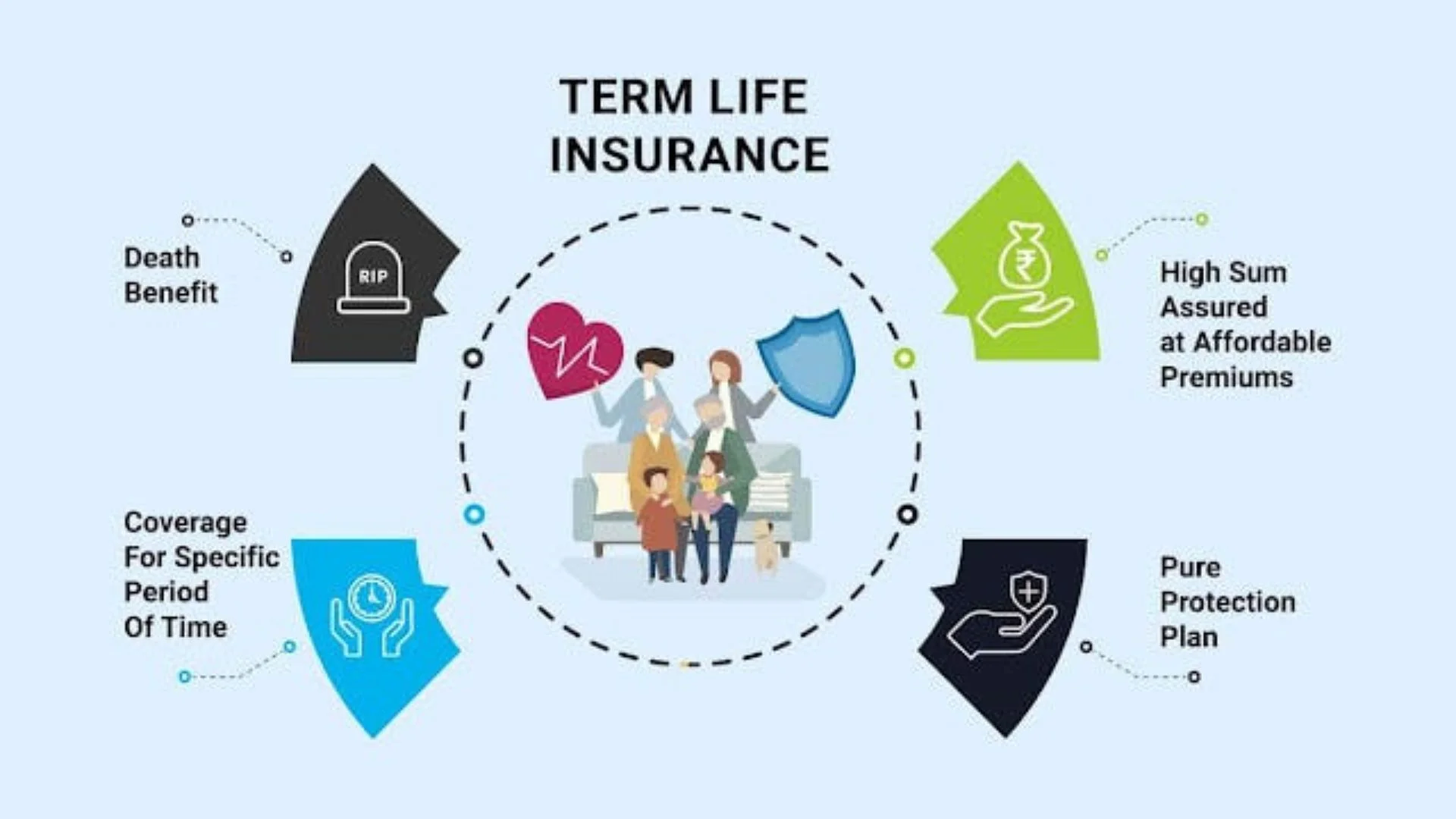Term life insurance is one of the most straightforward and cost-effective forms of life insurance available. It provides coverage for a specified period, typically ranging from 10 to 30 years. If the policyholder dies during the term, the beneficiaries receive a death benefit. One of the most important aspects of term life insurance is its rate, which determines the cost of maintaining the policy. Understanding these rates and what influences them can help individuals make informed decisions when purchasing life insurance.
Factors Influencing Term Life Insurance Rates
Several factors impact term life insurance rates, including age, gender, health, lifestyle, and the length of the term.
Age
Age is perhaps the most significant factor influencing term life insurance rates. Insurance companies assess the likelihood of a policyholder passing away during the term. Younger individuals are typically perceived as lower risk, leading to lower premiums. As age increases, so does the risk of death, which results in higher premiums. For example, a 30-year-old might pay significantly less for a 20-year term policy than a 50-year-old because the younger individual is statistically less likely to die during the term.
Gender
Gender also plays a crucial role in determining term life insurance rates. Statistically, women tend to live longer than men, which results in lower premiums for female policyholders. Insurance companies use actuarial data to calculate the risk and set rates accordingly. As a result, a 40-year-old woman may pay less for the same term life insurance policy than a 40-year-old man.
Health
Health is another critical factor affecting term life insurance rates. Insurers often require a medical exam to assess an applicant’s health. Conditions such as high blood pressure, diabetes, or a history of cancer can increase premiums. Additionally, lifestyle choices such as smoking or excessive alcohol consumption can lead to higher rates. Conversely, individuals in good health, with no pre-existing conditions, typically enjoy lower premiums.
Lifestyle and Occupation
Lifestyle and occupation can also influence term life insurance rates. Engaging in high-risk activities, such as skydiving or scuba diving, can lead to higher premiums due to the increased risk of death. Similarly, individuals with dangerous jobs, like firefighters or construction workers, may face higher rates because of their higher risk of injury or death on the job.
Length of the Term
The length of the term is another key factor in determining rates. Generally, the longer the term, the higher the premium. This is because the insurance company assumes a greater risk over a longer period. For instance, a 30-year term policy will generally cost more than a 10-year term policy for the same coverage amount, as the likelihood of the policyholder dying increases with time.
Types of Term Life Insurance Policies
There are various types of term life insurance policies, each with different rate structures. Understanding these can help individuals choose the policy that best fits their needs and budget.
Level Term Life Insurance
Level term life insurance is the most common type of term life policy. It provides a fixed death benefit and fixed premiums for the duration of the term. This means that if you purchase a 20-year level term policy, your premium will remain the same for 20 years. Level term policies are popular because they offer predictability and stability in rates.
Decreasing Term Life Insurance
Decreasing term life insurance features a death benefit that decreases over time, usually annually, while the premiums remain constant. These policies are often used to cover financial obligations that decrease over time, such as a mortgage. Since the death benefit reduces, decreasing term policies typically have lower initial premiums compared to level term policies.Understanding Term Life Insurance Rates
Renewable Term Life Insurance
Renewable term life insurance allows the policyholder to renew the policy at the end of the term without undergoing a medical exam. However, the premiums will likely increase with each renewal based on the policyholder’s age at the time of renewal. This type of policy is beneficial for individuals who want to maintain coverage without committing to a long-term policy upfront.
Convertible Term Life Insurance
Convertible term life insurance provides the option to convert the term policy into a permanent life insurance policy without a medical exam. The conversion must typically occur within a specified period. This option is attractive for those who may want permanent coverage in the future but prefer the lower premiums of a term policy initially.
How to Get the Best Term Life Insurance Rates
Securing the best term life insurance rates involves understanding the factors that influence rates and taking proactive steps to present yourself as a lower risk to insurers.Understanding Term Life Insurance Rates
Compare Multiple Quotes
Shopping around and comparing quotes from different insurers is crucial. Each insurance company uses its own underwriting criteria to assess risk and set rates. By obtaining quotes from several providers, you can identify the most competitive rates for your situation.
Choose the Right Term Length
Selecting the appropriate term length is essential for managing costs. While longer terms offer extended coverage, they come with higher premiums. Assess your financial obligations and choose a term that aligns with your needs. For example, if you have a 15-year mortgage, a 15 or 20-year term policy may be suitable.
Maintain a Healthy Lifestyle
Maintaining good health and avoiding high-risk behaviors can significantly lower your premiums. Regular exercise, a balanced diet, and abstaining from smoking and excessive drinking can improve your health profile. If you have pre-existing conditions, managing them effectively through medication and regular check-ups can also help.
Opt for a Medical Exam
While some insurers offer no-exam policies, opting for a medical exam can result in lower premiums if you are in good health. No-exam policies typically come with higher rates to offset the risk of insuring someone without comprehensive health information.Understanding Term Life Insurance Rates

Bundle Insurance Policies
Some insurance companies offer discounts if you bundle multiple policies, such as home, auto, and life insurance, with them. This can lead to savings on your term life insurance premiums.Understanding Term Life Insurance Rates
Consider Annual Payment Options
Paying premiums annually instead of monthly can sometimes result in discounts. Many insurers charge slightly more for monthly payments to account for administrative costs. By paying annually, you might be able to save a percentage of the total premium.
The Role of Riders in Term Life Insurance Rates
Riders are additional benefits or options that can be added to a term life insurance policy, often at an extra cost. Understanding these riders can help you customize your coverage to better meet your needs.
Waiver of Premium Rider
This rider waives the premium payments if the policyholder becomes disabled and is unable to work. While this rider increases the cost of the policy, it provides peace of mind knowing that coverage will continue even if you cannot pay the premiums due to a disability.Understanding Term Life Insurance Rates
Accelerated Death Benefit Rider
The accelerated death benefit rider allows the policyholder to access a portion of the death benefit while still alive if diagnosed with a terminal illness. This can help cover medical expenses and other costs during a challenging time. Adding this rider typically increases the premium slightly.
Conversion Rider
The conversion rider enables the policyholder to convert their term policy to a permanent life insurance policy within a specified period. This can be advantageous if you decide you need lifelong coverage. Although this rider adds to the policy cost, it provides flexibility for future needs.Understanding Term Life Insurance Rates
Return of Premium Rider
The return of premium rider refunds the premiums paid if the policyholder outlives the term. This rider significantly increases the premium cost but offers a way to recoup your investment if the policy is not used.
Understanding the Cost of Term Life Insurance
The cost of term life insurance is primarily determined by the policyholder’s age, health, and the length and amount of coverage. Below are some examples to illustrate typical rates for various scenarios.
Average Rates for Different Ages
- 20-Year Term Policy: For a healthy 30-year-old male, a $500,000 20-year term policy might cost around $20 per month. The same policy for a 40-year-old male could be about $35 per month, and for a 50-year-old male, it could be approximately $85 per month.
- 30-Year Term Policy: A $500,000 30-year term policy for a healthy 30-year-old female might cost about $35 per month. For a 40-year-old female, the cost could be around $55 per month, and for a 50-year-old female, it could be approximately $120 per month.
These rates are illustrative and can vary significantly based on individual circumstances and the insurer’s underwriting process.
Impact of Health and Lifestyle on Rates
- Smokers vs. Non-Smokers: Smokers can expect to pay much higher premiums than non-smokers. For instance, a $500,000 20-year term policy for a 30-year-old male smoker might cost $60 per month, compared to $20 per month for a non-smoker.
- Medical Conditions: Individuals with controlled medical conditions might still qualify for favorable rates, but those with more severe health issues may face higher premiums. Insurers assess the severity and management of conditions like diabetes or hypertension when setting rates.
When Term Life Insurance Might Not Be the Best Option
While term life insurance is suitable for many, it may not be the best choice for everyone. Consider these scenarios where other types of life insurance might be more appropriate.
Need for Permanent Coverage
If you have lifelong financial obligations or want to leave a legacy, permanent life insurance, such as whole life or universal life insurance
